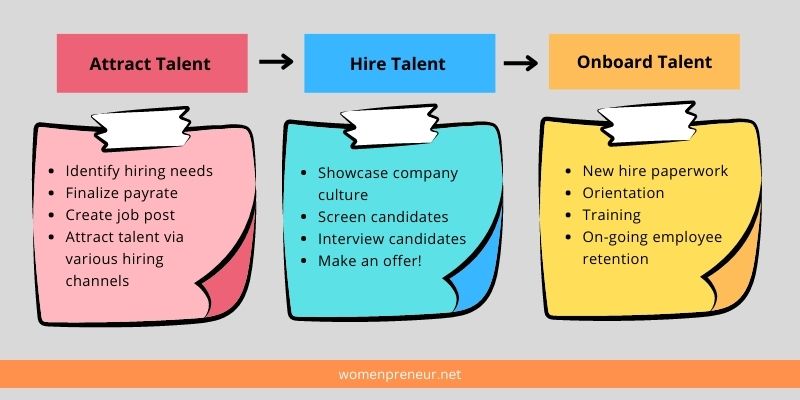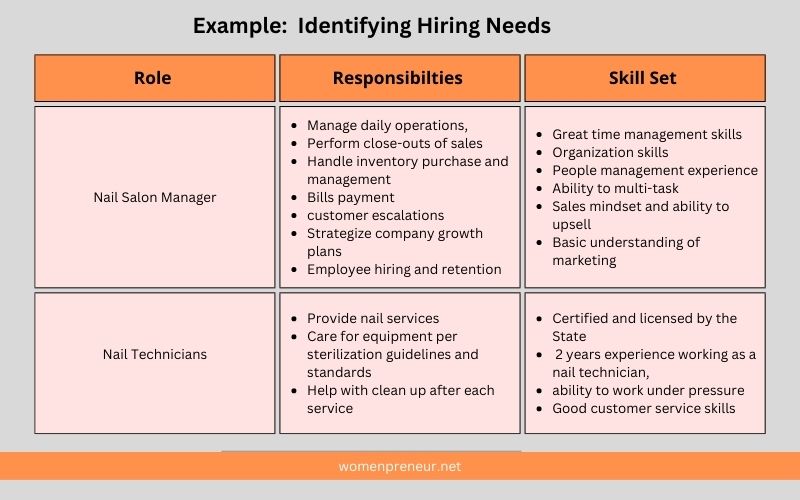The most comprehensive guide for successful hiring for women entrepreneurs (video included)
If you have done some ground work and implemented the process, a lot of the hiring can be done for free or by spending little amount.
- Planning & Attracting Talent
- Hiring Talent
- Retaining Talent
The flowchart below shows the main steps involved in each stage:


Each stage is equally critical and it is essential for small business owners to approach the end to end process strategically.
In this blog, we will look at each of these stages in depth and see what’s involved in each stage.
I. Planning & Attracting Talent
While each stage is extremely important, this step lays a strong foundation for your hiring process.
Identifying your hiring needs:

Determining pay rate and benefits:
Creating a stellar job post:
Attracting talent via various channels:
Online Job Boards:
Social Media:
Post the job posts on your social media accounts such as Facebook, Instagram, Twitter and also Pinterest. The more eyes that see the posting, the more chances of good talent coming your way.
Local newspapers:
Word of mouth:

II. Hiring Talent
Show off company culture every step of the hiring process:
Company culture is such an important concept but is often overlooked by hiring managers. Think of this as you move through every step of the hiring process. Once you have ensured your job post has the required information and also highlights your company’s culture and has been posted via the various channels listed above, now actively start screening the candidates that start applying.
Screen Candidates:
Interviewing:
Making an offer:

There you go!
III. Retaining Talent
Introductions and Walkthrough:
Essential paperwork:
Review Policies and Handbook
- Office hours and Timekeeping
- Attendance Policy
- Code of conduct and customer service expectations
- Non-disclosure and client privacy
- Uniform policy (if applicable)
Review Job Expectations:
Training Plan:
Now you have the main stages for hiring, you can adapt these to create your overall hiring framework customized to your organization and business needs. Don’t forget to check out the Hiring Checklist in the Resources section of our site. You can download it for free!

